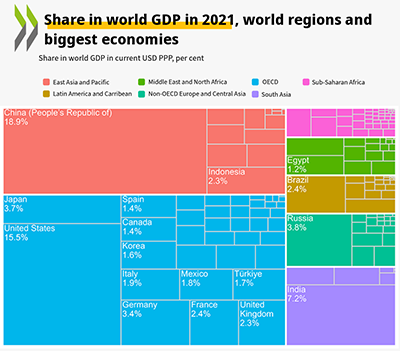Prices and purchasing power parities (PPP)
Learn more
-
Inflation or Consumer price Index (CPI)?
Inflation is a rise in the general level of prices of goods and services that households acquire for the purpose of consumption in an economy over a period of time.
Read more -
What are PPPs?
PPPs are the rates of currency conversion that equalize the purchasing power of different currencies by eliminating the differences in price levels between countries. In their simplest form, PPPs are simply price relatives that show the ratio of the prices in national currencies of the same good or service in different countries.
Read more -
Methodological Guide for Developing Producer Price Indices for Services (SPPI)
This second edition of the SPPI Guide is a complement to the International Producer Price Index Manual published by the IMF in 2004 in two ways: it focuses on service-specific aspects in the PPI compilation by developing further the conceptual framework and it adds detailed descriptions of PPI measurement for a wide range of individual service industries.
Read more
What's new
OECD headline inflation broadly stable at 5.7% in April 2024
|
5 June 2024 – Year-on-year inflation in the OECD as measured by the Consumer Price Index (CPI) remained broadly stable at 5.7% in April 2024, after 5.8% in March and 5.7% in January and February. Headline inflation declined in 24 of 38 OECD countries, with the largest falls of 0.5 percentage point (p.p.) or more, recorded in Estonia, the United Kingdom, Iceland, Luxembourg, Austria, and Slovenia. |
Share of OECD economies in global GDP broadly stable at 46% in 2021 compared to 2017
|
|
30 May 2024 – The economies of the current 38 OECD member countries accounted for about 46% of world GDP in 2021, broadly stable compared to 48% in 2017. More generally, shares of regions in world GDP did not change substantially between 2017 and 2021. |
Behind the numbers |
Statistical references |
More on methodology |
